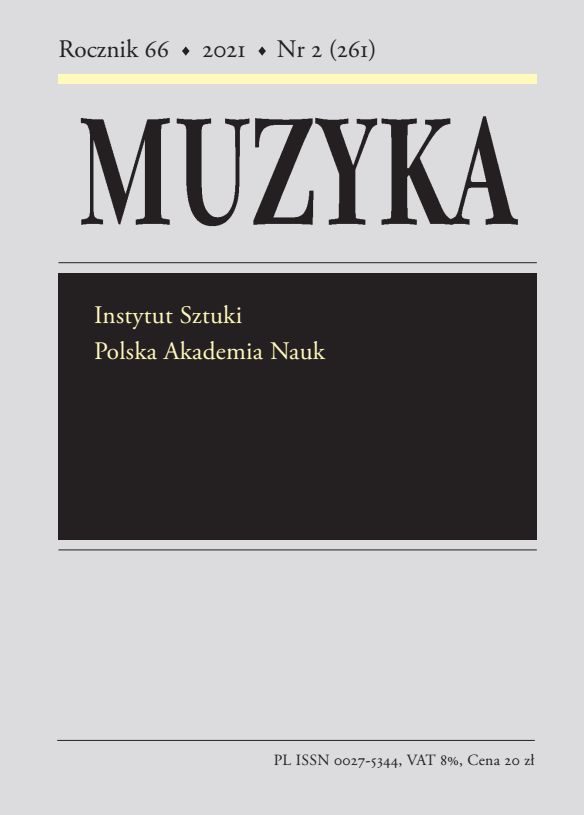Antymuzyka i antyinstrumenty w tradycji kulturowej Polski
Anti-music and Anti-instruments in the Cultural Tradition of Poland
Author(s): Zbigniew Jerzy PrzerembskiSubject(s): Music
Published by: Instytut Sztuki Polskiej Akademii Nauk
Keywords: folk culture; folk customs and rituals; folklore; folk music; folk music instruments
Summary/Abstract: Apart from sonic manifestations belonging to the sphere of music as broadly conceived, the musical tradition transmitted orally through the generations from master to pupil, without the agency of writing (and music notation in particular), also comprises a phenomenon referred to as anti-music, usually performed during various rites of passage. Anti-music is part of the wider notion of ritual noise, conceived as acoustic activity initiated for apotropaic purposes. It is poles apart from those sonic phenomena conventionally regarded as music. In traditional culture, anti-music is associated with ritual time, which constitutes a reversal of ‘ordinary’ non-ritual time.For centuries, in Polish and European culture (and also that of other continents), there was a conviction that various loud sonic manifestations belonged to the broad spectrum of means for protecting people against evil forces, which were supposedly more active in places and times which cultural ethnology and anthropology interpret as borderline or transitional, distinguished by the suspension of the previously existing order, a return to primaeval chaos and an opening-up of contact with the otherworld. Ritual noise could also be a part of various customs and rites belonging to the annual cycle, such as carolling, Mardi Gras, mid-Lent, Easter and spring celebrations, Midsummer Night, harvest festivals and All Souls’ Day. Within the cycle of human life, rites of passage were associated with birth, sexual initiation, marriage and death. The places considered as points of transition included local boundaries and crossroads, but also wildernesses, graveyards, hills and big trees.Ritual noise or anti-music can take vocal, instrumental or, more frequently, quasi-instrumental forms, using various sound-producing tools or even random objects, as well as anti-instruments, which are a parody and a contradiction of ‘normal’ instruments. Such anti-instruments include, first and foremost, the so-called devil’s fiddle and the Kashubian friction drum called the burczybas.
Journal: Muzyka
- Issue Year: 66/2021
- Issue No: 2
- Page Range: 121-140
- Page Count: 20
- Language: Polish

